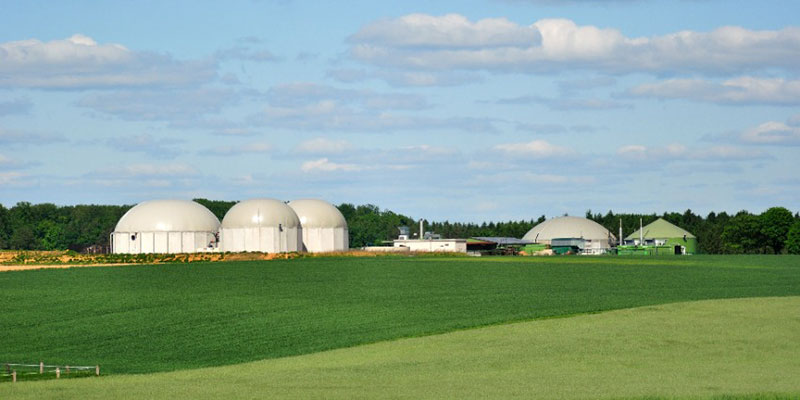The IRA extends tax credits that were once offered only for electricity generation systems to all biogas sectors, including farming.
New legislation promotes greater adoption of anaerobic digestion in the US
On August 16, United States President Biden signed the $750 billion Inflation Reduction Act (IRA) into law and biogas industry groups immediately hailed its hefty incentives for anaerobic digestion, a technology that recovers energy from waste in the form of biogas.
Inflation Reduction Act’s Biogas Provisions
Previously, tax credits were only offered for electricity generation systems. Now, the IRA extends tax credits to all biogas sectors, including wastewater treatment, farming, the food sector, renewable energy, renewable natural gas, and renewable heat.
It appropriates almost $2 billion through 2027 for the Department of Agriculture’s Rural Energy for America Program and $8.45 billion through 2026 for the Environmental Quality Incentives Program. Both programs will allow smaller farms to install manure digesters, which might have been too costly, addressing environmental concerns.
Adoption of Anaerobic Digestion Around the World
So far, the European Union has led the world in anaerobic digestion adoption, with approximately 17,500 digesters. Germany, in particular, was an early biogas adopter. The German Biogas Association estimates that 9,359 anaerobic digestion plants were running in Germany by 2020.
Fluence has been particularly active in Europe with tailored anaerobic digestion waste-to-energy solutions for clients including Amadori SpA, Vitalfood-Italcanditi, Italian biochemical company Mater-Biotech, Dolcissimo, Latteria e Caseificio Moro, and Consorzio Cartiere di Tivoli.
The U.S., in contrast, only maintains 2,300 biogas projects. With only 15% of U.S. biogas opportunity realized, the passage of the IRA has the potential to ignite explosive growth of biogas recovery projects in a largely untapped market.
How Anaerobic Digestion Works
Anaerobic digestion treats some of the most challenging, high-load wastewater streams, while harvesting carbon-neutral energy, improving the environment while lowering utility bills. Just how much carbon-neutral energy can be recovered from wastewater? A good, estimated average is five times the energy it takes to fuel the recovery process.
Virtually any wastewater stream with a high organic load may be a good candidate for anaerobic digestion, including domestic sewage, dairy processing, paper and pulp manufacturing, meat and fish processing, brewing, and fruit and confectionary operations. One of the advantages of anaerobic digestion is that it can treat not only these industries’ wastewater streams, which can be difficult to treat because of their high organic loads, but can also upcycle the value of energy and nutrients for beneficial purposes.
Fluence provides anaerobic digestion solutions, and to complement anaerobic digestion applications, Fluence has developed modular Nitro shortcut nitrogen removal to treat high-load sidestreams more efficiently than ever.
The U.S. is now on the move with anaerobic digestion adoption, and it’s long past time to stop throwing the baby out with the bathwater. There’s a trove of valuable energy flowing from pipe outfalls and driving up utility bills. We could be profiting from it instead. Fluence is here to help you identify the anaerobic digestion waste-to-energy opportunities in your unique wastewater stream. Contact Fluence to learn more.

